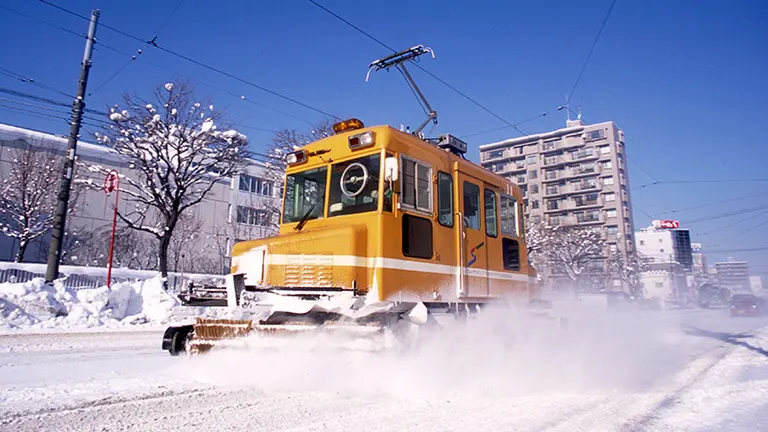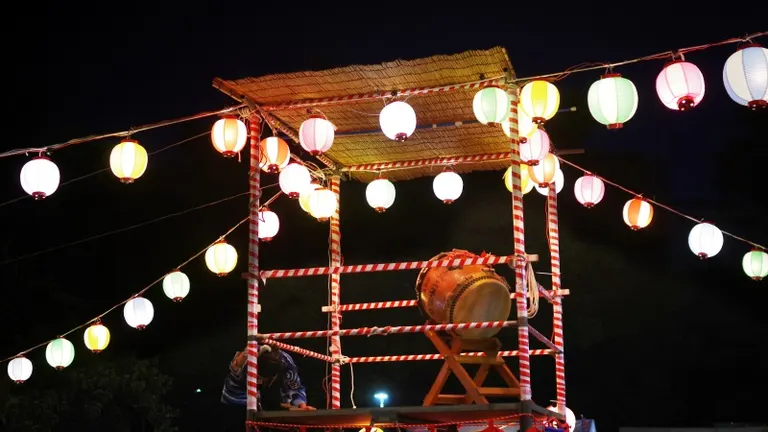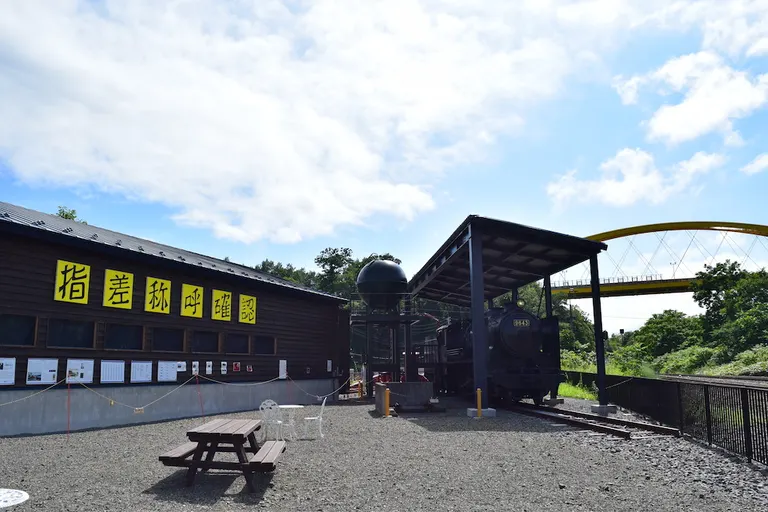
ARTICLES
A must-see for railway fans! "Niseko Railway Heritage Site" with steam locomotives, express trains, and turntables
Many people visit Niseko Town every year for its hot springs and winter sports. If the railway had never opened in this area, the hugely popular Niseko Town we know today might not have existed. You can learn about this history at the Niseko Railway Heritage Site, which opened to the public in 2021.
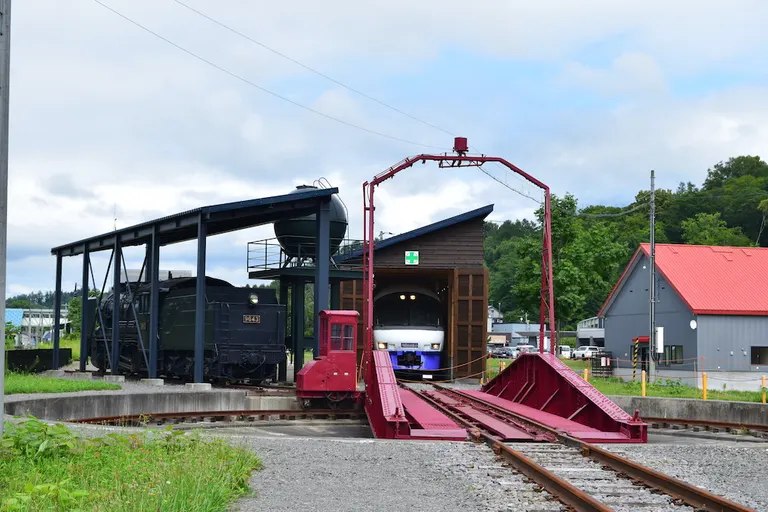
This spot has captured the hearts of railway fans, with the opening of a turntable in 2014, a steam locomotive in 2017, and the Niseko Express in 2020. It is located right next to Niseko Station, which is scheduled to close by 2030, so many fans visit by train. When you get off at Niseko Station and head towards the railway heritage, the first thing you'll see is the steam locomotive "9643" on display outdoors. The lights are on in the pitch black, heavy car body that sits on the rails, giving it a realistic feel that makes it look like it might start moving at any moment!
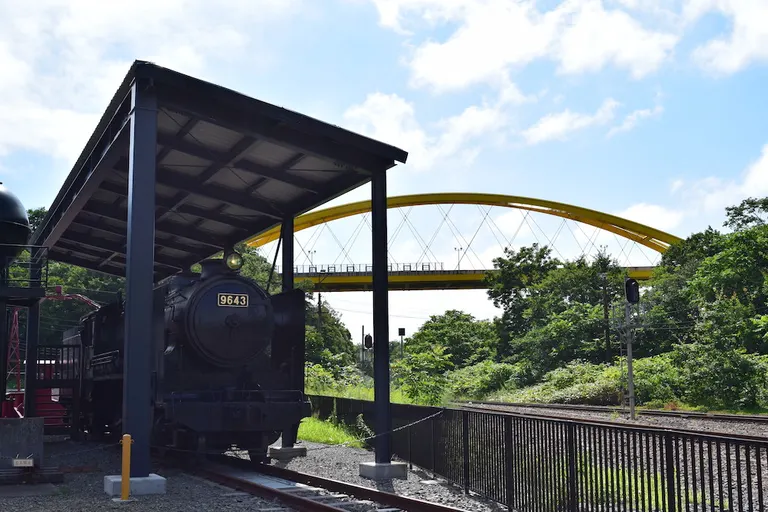
This steam locomotive, "9643," was manufactured by Kawasaki Shipbuilding in 1914. As of 2022, it is 108 years old. It continued to run until the line was abandoned in 1974, and after its retirement it was preserved at the Sapporo Beer Garden in Sapporo. Since moving to Niseko Town, the ship has been housed, painted, and restored in order to be enjoyed by many people for a long time. Its whistle can still be heard. On some days, local revitalization volunteers will be on hand to give explanations and guide you around.
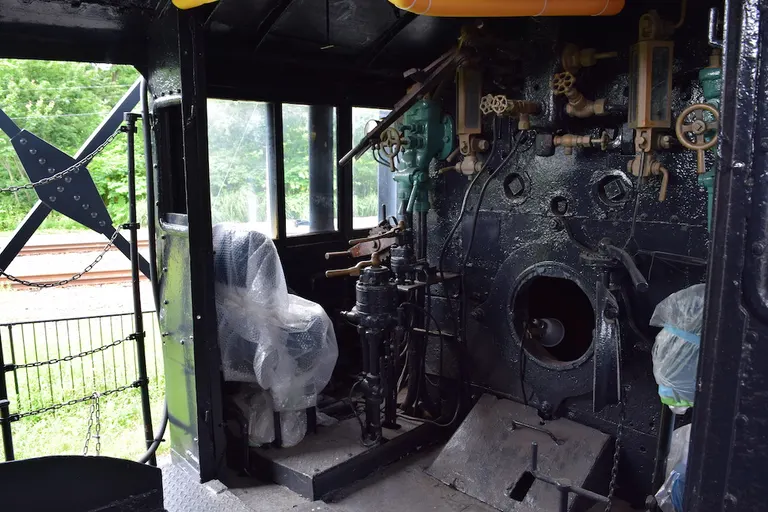
The seat of the engineer (who drives the locomotive) is on the left, and the seat of the assistant engineer (who puts coal into the firebox) is on the right. All the equipment from when the locomotive was in operation remains as it was.
As I continued walking, glancing past the steam locomotive, I noticed something unfamiliar: a bridge spanning a large circle.
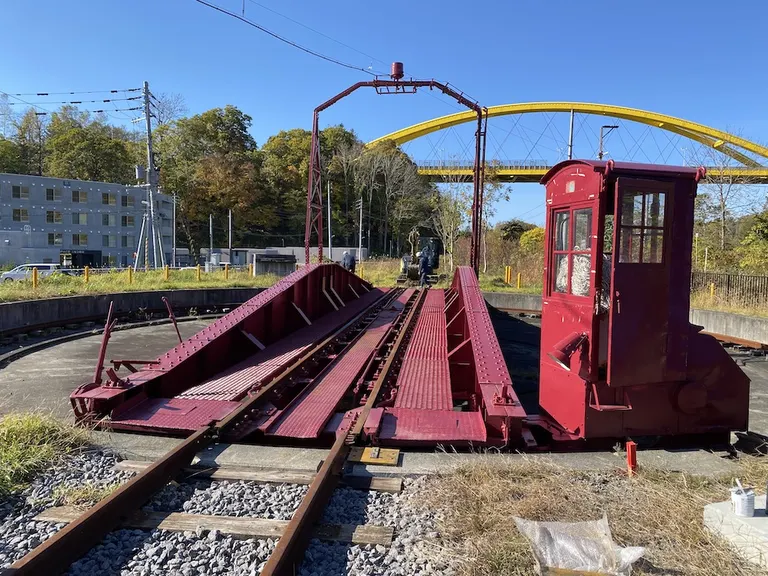
The diameter of the turntable is about 20m. The contrast of the color of the Niseko Bridge in the background and the blue sky is also worth seeing. Image provided by Arishima Memorial Museum
This unfamiliar piece of equipment is a turntable, which is used to change the direction of trains. This turntable was manufactured in 1957 and was active in Shintoku Town, but was moved to Niseko in 1989 to operate the "C62 Niseko-go". After about five years, the "C62 Niseko-go" was discontinued and the turntable was also retired from active use. Since then, it has not been seen by the public.
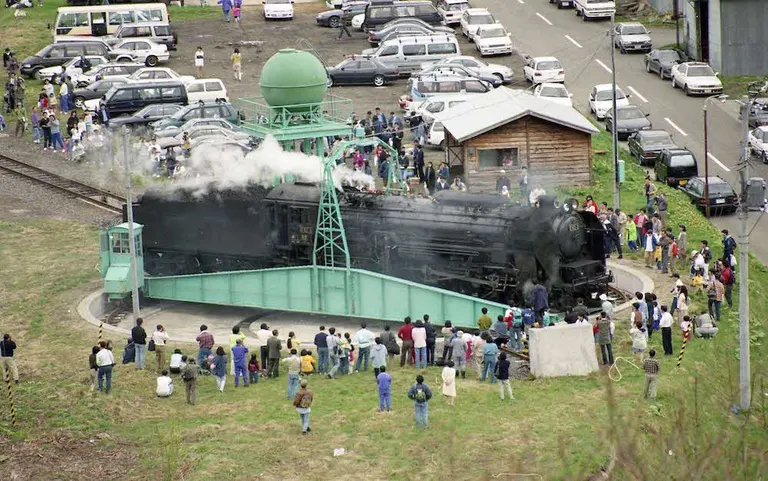
Photo courtesy of Arishima Memorial Museum
Since 2011, Niseko Town has been working to let more people see this turntable and its history, and began exhibiting it in 2014. By the way, this turntable is set up so that it can be operated both manually and electrically.
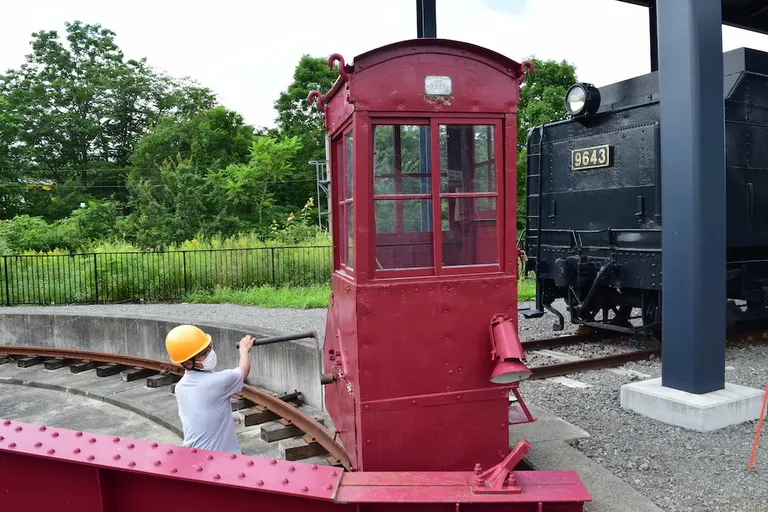
The turntable is operated manually using a lever, but when it needs to be operated electrically, it is operated from inside a box like a telephone booth.
If you look back now, you will see the Niseko Express, which many of you will probably recognize.
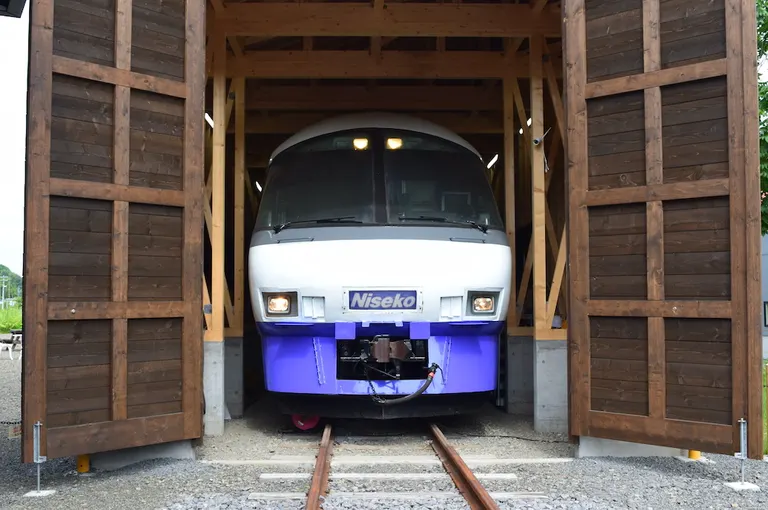
This "Niseko Express" is actually a "Dosanko vehicle" manufactured at JR Hokkaido's Naebo Factory in 1988. In winter, it connects the Niseko area with New Chitose Airport, and runs all over Hokkaido at other times of the year. After being decommissioned in 2017, its preservation was realized through crowdfunding, and it returned to Niseko Town in the summer of 2020. By the way, the Niseko Express also uses a turntable to change direction!
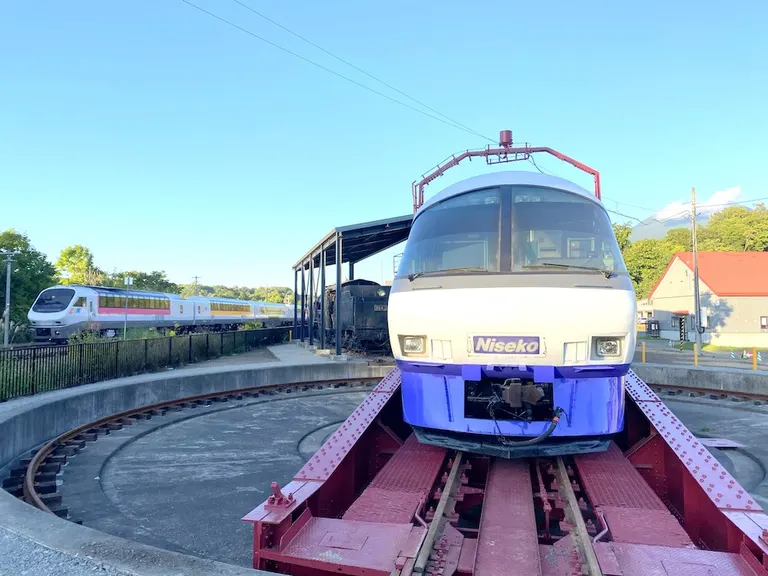
Photo courtesy of Arishima Memorial Museum
Now, to unravel the history of Niseko, let's take a look at the Niseko Railway Heritage Site from a slightly different perspective.
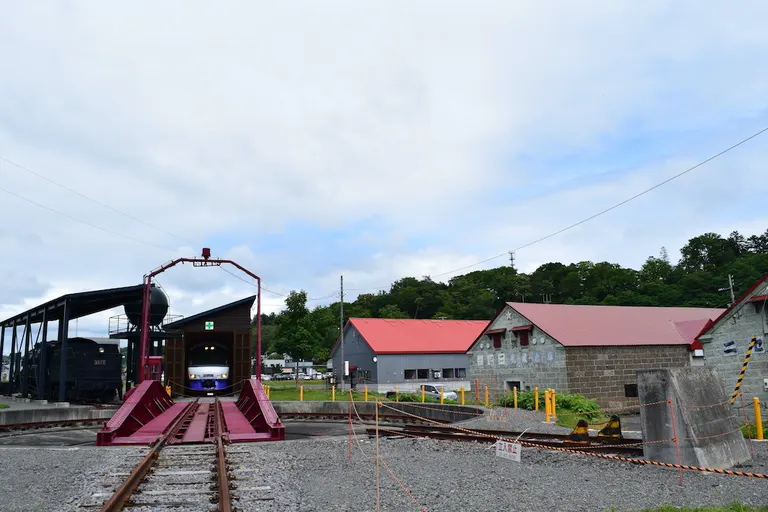
Behind the steam locomotive is Niseko Station, and to the right of the Niseko Express turntable is the Niseko Central Warehouse. The Niseko Central Warehouse is now a facility where many people can gather, with space for teleworking, work, exhibitions, and more, as well as a popular soup curry restaurant. Niseko Central Warehouse Facility Guide https://www.nisekosoukogun.com/institution/ At first glance, the Central Warehouses seem unrelated to Niseko Station and the railway heritage sites, but in fact, without these three, the town of Niseko may not have developed. The railway line in Niseko opened in 1936. It connected what is now Niseko Town and Makkari Village, and was opened to transport agricultural products, mainly potatoes.
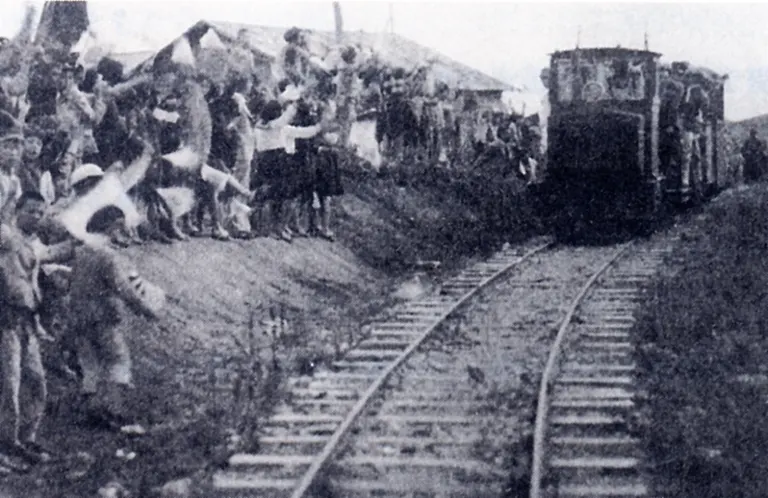
Photo courtesy of Arishima Memorial Museum
Agricultural products were transported from Makkari Village, unloaded at Niseko Station, stored and processed in a central warehouse, then transferred to the national railway and shipped all over the country. Niseko flourished as a transit point, and its population gradually increased. Jumping ahead in time, the town has prospered alongside its railways, with the Niseko Express being revived in 1988 and the steam locomotive C62 Niseko in 1990.
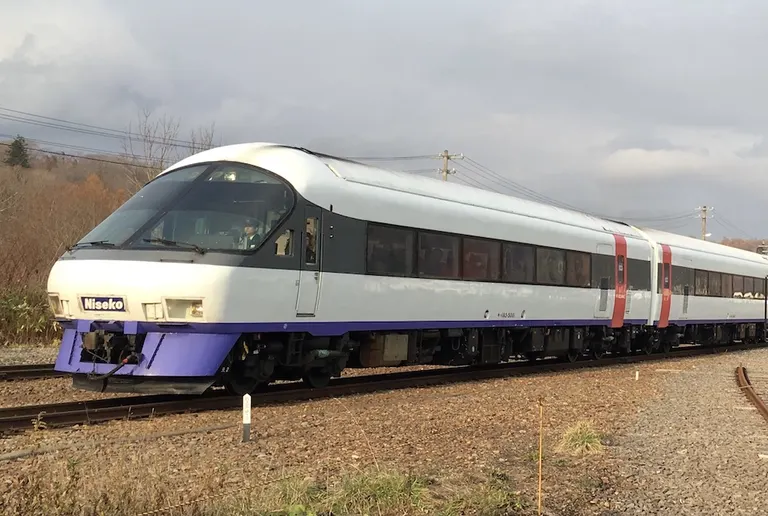
Photo courtesy of Arishima Memorial Museum
There is also a history exhibit on the wall of the depot where the Niseko Express train is located, so be sure to take a look!
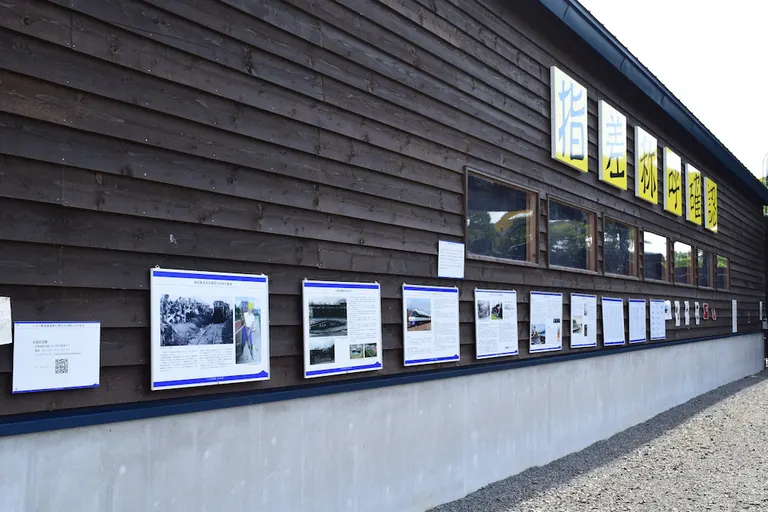

■Address: 144 Chuodori, Niseko-cho, Abuta-gun, Hokkaido ■2022 Opening Dates: Saturday, May 28th - Sunday, September 25th ■ Admission fee: Free
See details of "Niseko Railway Heritage Site" on Domingo





